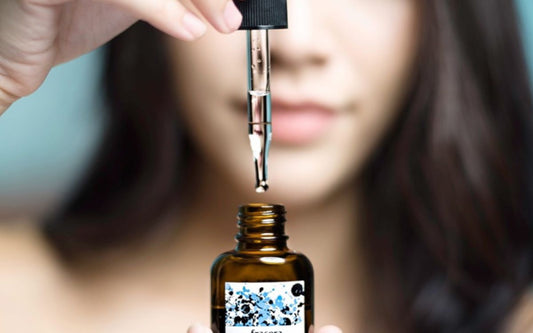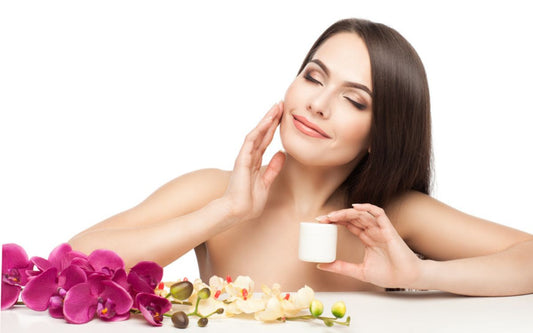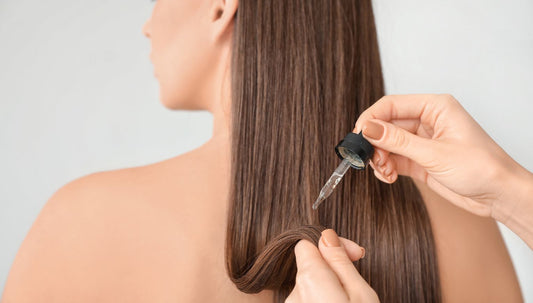The power of hair oil treatments to nourish, mend, and revitalize hair has made them a beloved beauty practice for centuries. Whether you’re following ancient practices or modern routines, hair oils are a go-to for many people’s hair care routines. The best hair oil treatments involve not only choosing the right product, but also mastering the application process and avoiding common mistakes. Applying the correct hair oil serves no purpose if it leads to excessive hair loss or damage.
Let’s explore what you can expect from using hair oils and how to make the most of these hair oil treatments at home.
How Does Hair Porosity Affect Your Choice of Oils?
One of the most important factors in achieving success with hair oil treatments for hair growth is understanding your hair's porosity. Hair porosity refers to how easily your hair absorbs and retains moisture. Knowing your hair's porosity can help you select the right oils that will work best for your unique hair type.
So, it's crucial to avoid using the wrong oils on your hair, as this can do more harm than good. Look for oils that are labeled as "cold-pressed" and "organic," as these are the purest and most beneficial for your hair. Steer clear of oils like mineral oil, baby oil, and lemon oil, as they can be damaging to your locks.
- High Porosity Hair: If your hair is high porosity, meaning it absorbs moisture easily, you may benefit from heavier, more occlusive oils like coconut oil or castor oil. These oils can help seal in moisture and prevent further dryness.
For this kind of hair, you might want to try Misty Anti-Hair Fall Oil. It’s packed with a blend of rich oils like amla oil, olive oil, and black seed oil, which can be really beneficial.
- Low Porosity Hair: If your hair is low porosity, meaning it has a harder time absorbing moisture, you'll want to opt for lighter, more penetrating oils like avocado oil or jojoba oil. These oils can help hydrate your hair without weighing it down. That’s why you may try the Misty Rosemary Hair Oil, which is very light in nature.
- Combination Hair: If you have a mix of high and low porosity hair, you may need to experiment with different oils or even create your own custom blends to find the perfect balance.
One great option is Misty Special Hair Oil - Deep Nourishment. It’s a custom blend of essential oils, ranging from thicker to lighter types, making it perfect for combination hair.
If you don’t get any results from using the right oil in your hair, try to dilute it with a carrier oil to avoid irritation and enhance absorption. Remember, the key is to listen to your hair and adjust your hair oil treatment at home accordingly.
What Are the Proper Oil Application Techniques?
Now that you've selected the right oils for your hair, it's time to learn the proper application techniques to ensure you're getting the most out of your hair oil treatment.
Step 1: Detangle Your Hair
It's crucial to detangle your hair before applying any oils. This helps to ensure the oils are distributed evenly throughout your strands, and it also prevents further damage and breakage. Use a wide-tooth comb or your fingers to gently work through any knots or tangles, starting from the ends and working your way up to the roots.
Step 2: Warm Up Your Oils
Warming up your oils before application is a game-changer. By heating the oils, you'll help them penetrate deeper into the hair cuticle, promoting better absorption and sealing. To do this, simply place your oil bottle in a bowl of hot water for a minute or two, or use a microwave-safe container to gently warm the oil.
Step 3: Apply the Oils
Once your oils are warmed up, it's time to apply them to your hair. Start by using a Q-tip or your fingertips to distribute the oil evenly across your scalp, focusing on the areas that need the most attention. Then, divide your hair into sections and use your hands to gently apply a light layer of oil from roots to ends.
Remember, less is more when it comes to oiling your hair. Avoid the temptation to soak your strands in oil, as this can lead to excessive buildup and the need for more frequent washing, which can strip your hair of its natural oils. Aim for a light, even coating that leaves your hair feeling slightly moisturized, not dripping wet.
Step 4: Massage the Scalp
Massaging your scalp after applying the oils is a crucial step that shouldn't be overlooked. This gentle massage helps to stimulate blood flow and promote healthy hair growth. Use your fingertips or a scalp massager to gently work the oils into your scalp, using circular motions for at least 5 minutes.
Remember to avoid vigorous or rough massaging, as this can lead to breakage and hair loss. The key is to be gentle and focused, allowing the oils to work their magic.
How Do You Protect Your Hair During the Oiling Process?
Once you've applied and massaged the oils into your hair and scalp, it's time to protect your locks while the treatment works its magic. This way, you can call it the best hair oil treatment you have given to your hair.
Covering Your Hair
It's important to avoid tying your hair too tightly after oiling, as this can lead to breakage and damage. Instead, use a shower cap or a microfiber towel to gently cover your hair, allowing the oils to penetrate without putting unnecessary stress on your strands.
Using a Heat Cap
If you have low-porosity hair, using a heat cap or a DIY version (such as wrapping your hair in a warm, damp towel) can be incredibly beneficial. The gentle heat helps to open up the hair cuticle, allowing the oils to penetrate more deeply and effectively.
Even if you don't have low-porosity hair, using a heat cap can still enhance the results of your hair oiling routine by increasing blood flow and promoting better absorption of the oils.
How To Rinse and Wash Your Oiled Hair Properly?
After allowing the oils to work their magic for the recommended time (1-8 hours), it's time to rinse and wash your hair. This step is just as important as the oiling process itself, as it can make or break the overall effectiveness of your hair oil treatment.
Rinse the Oils Effectively
When rinsing the oils from your hair, start by soaking your strands in warm water for about a minute. This helps to emulsify the oils, making them easier to wash out. Then, use a quarter-sized amount of a mild shampoo to gently cleanse your hair, taking care to avoid over-shampooing, which can strip your hair of its natural oils.
Remember, if you've applied the oils properly and avoided soaking your hair in them, the rinsing process should be relatively easy and straightforward.
Choose the Right Shampoo
Speaking of shampoo, it's important to select a gentle, sulfate-free formula that won't dry out your hair. You may use any light shampoo that can be a great option for maintaining moisture and nourishment after an oiling treatment.
Frequency of Oiling
Finally, it's important to note that you don't want to overdo your hair oiling routine. It's best to limit your deep oiling treatments to once or twice a week, as your hair and scalp need a break to maintain their natural balance.
However, you can still incorporate light oiling of the ends of your hair on a more frequent basis (such as daily) to help protect and nourish your strands. Just be sure to use only a few drops of a lightweight oil, like argan oil, to avoid weighing down your hair.
What Are the Benefits of the Best Hair Oil Treatment?
By following the techniques and avoiding the common mistakes outlined in this blog post, you'll be well on your way to experiencing the numerous benefits of the best hair oil treatment at home. These benefits include:
- Improved Hair Growth: The oils and scalp massage can help stimulate blood flow and nourish the hair follicles, promoting healthier, stronger hair growth.
- Reduced Dryness and Breakage: The oils help to seal in moisture and protect your strands from environmental stressors, leading to less dryness, split ends, and breakage.
- Enhanced Shine and Manageability: Properly oiled hair tends to be more lustrous, smooth, and easier to style and manage.
- Soothed Scalp: The oils and gentle massage can help alleviate scalp irritation, flakiness, and even dandruff.
Remember, consistency is key when it comes to hair oiling. Stick to a regular routine, and be patient as you start to see the transformative results.
Moreover, if you are trying different oils to see which one suits you best, try the best hair oil in Pakistan that Misty offers. Then select the one that works best for you.
Conclusion
Mastering the art of hair oiling is a game-changer for the health and appearance of your locks. By understanding your hair's unique needs, choosing the right oils, and following the proper application techniques, you can unlock the full potential of this best hair oil treatment.
Remember to avoid the common mistakes mentioned above, such as combing wet, oiled hair, using the wrong oils, and over-oiling your strands. With a little bit of care and attention, you'll be on your way to achieving the luscious, healthy hair you've always dreamed of.
So, what are you waiting for? Dive into the world of the best hair care products in Pakistan, give your hair an amazing treatment, and let your tresses flourish.



